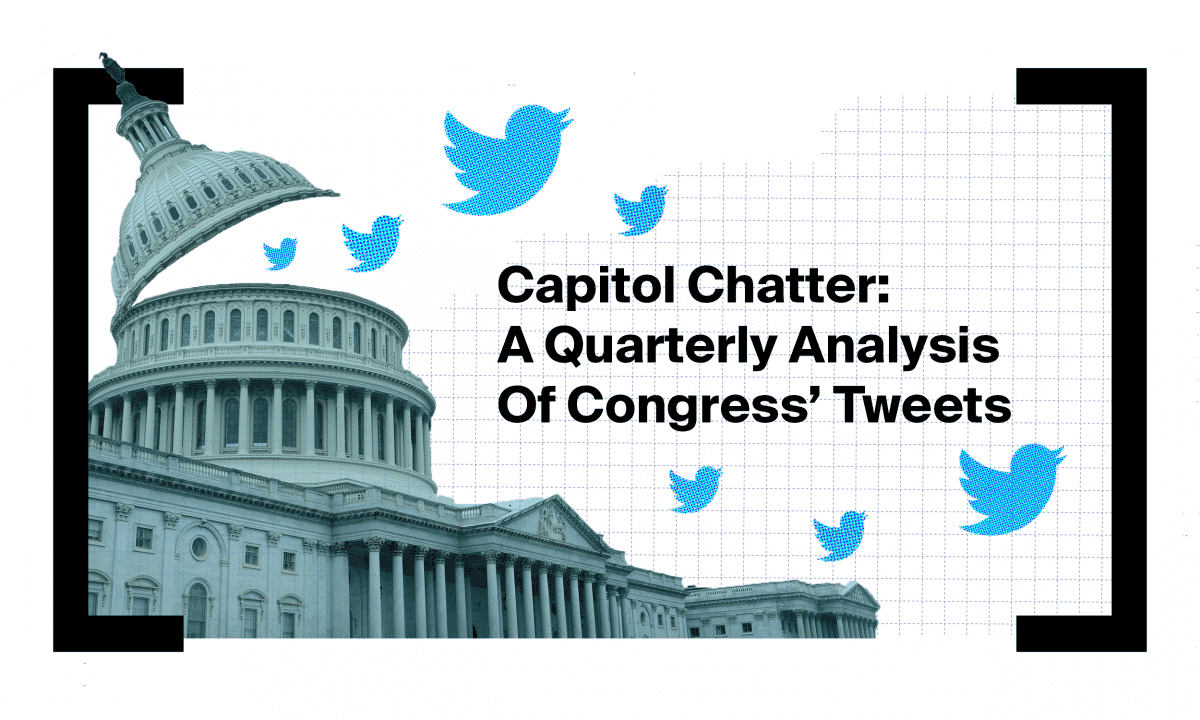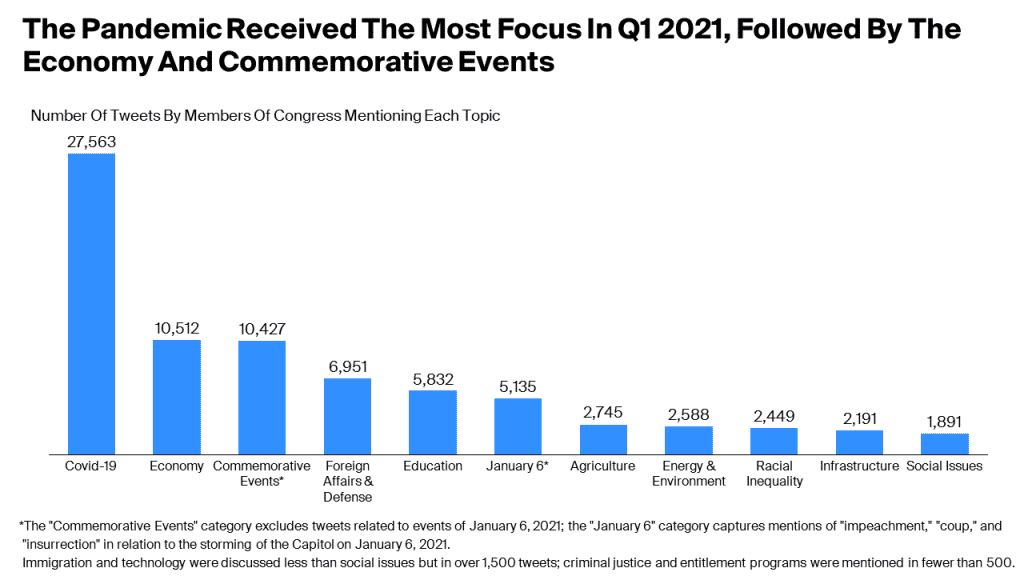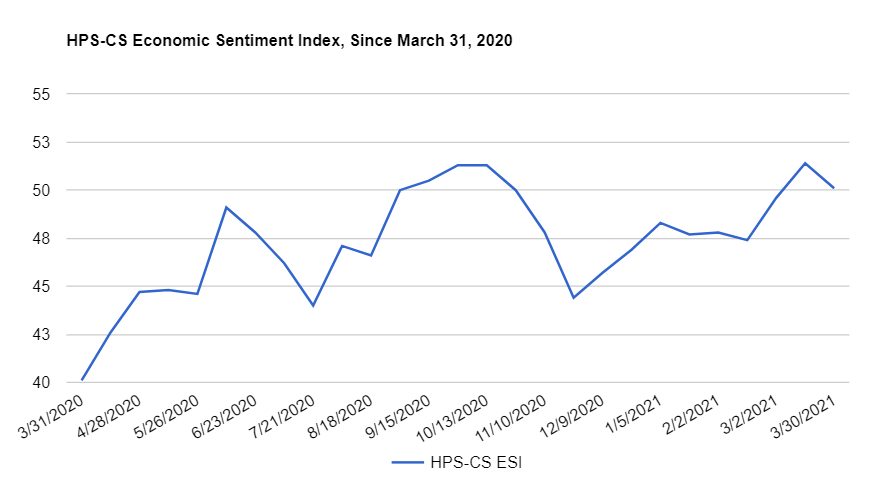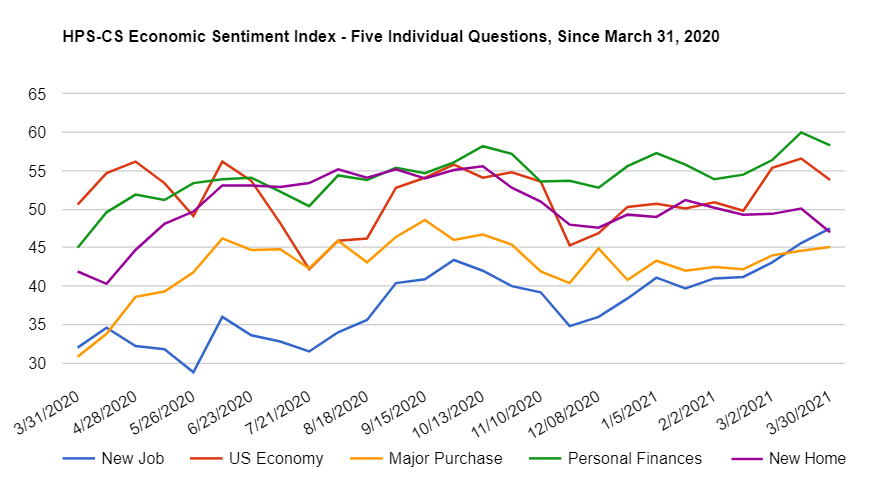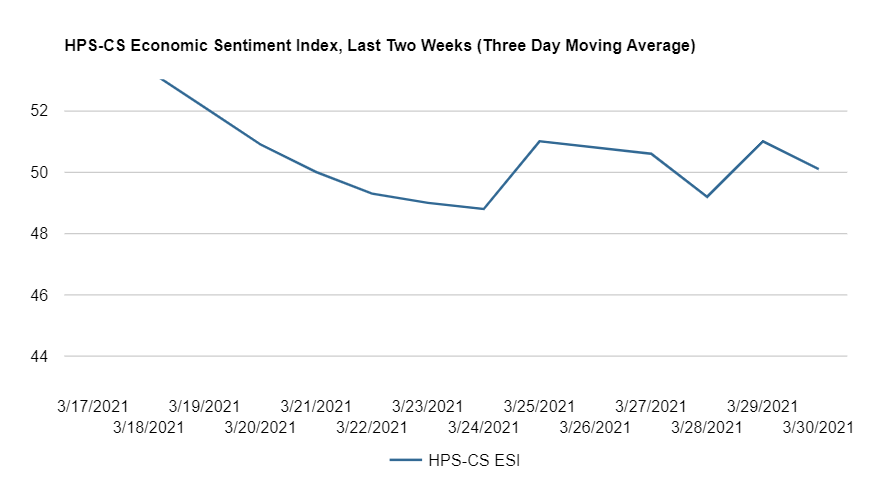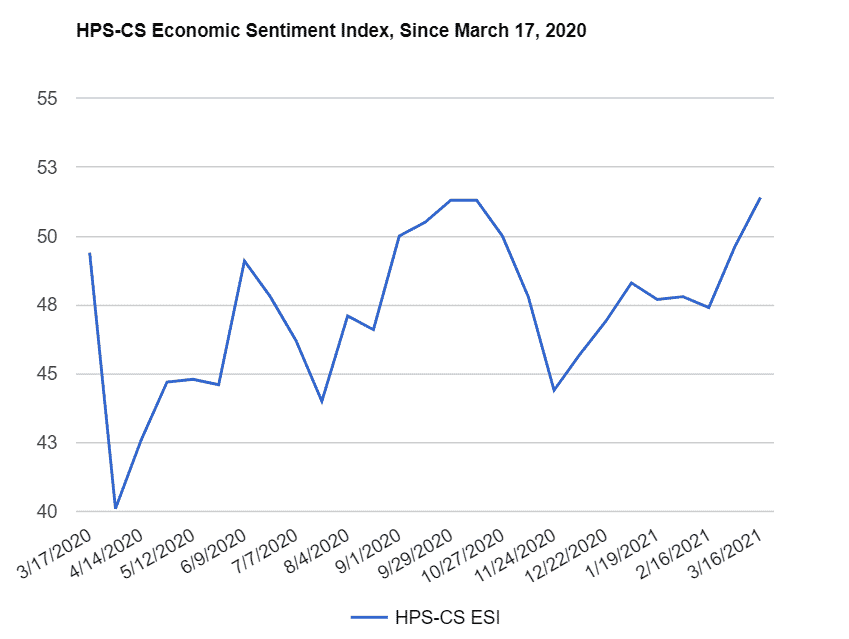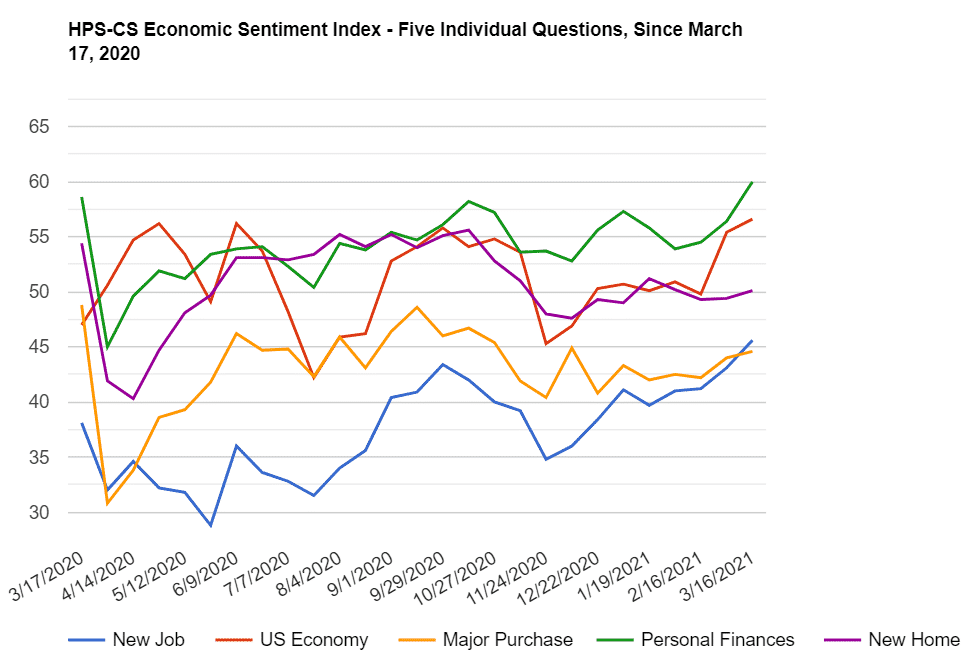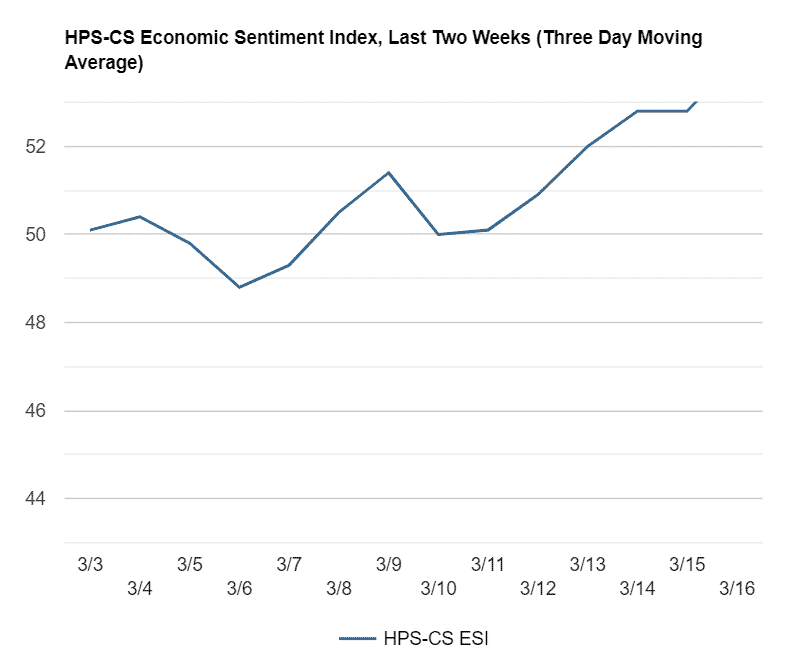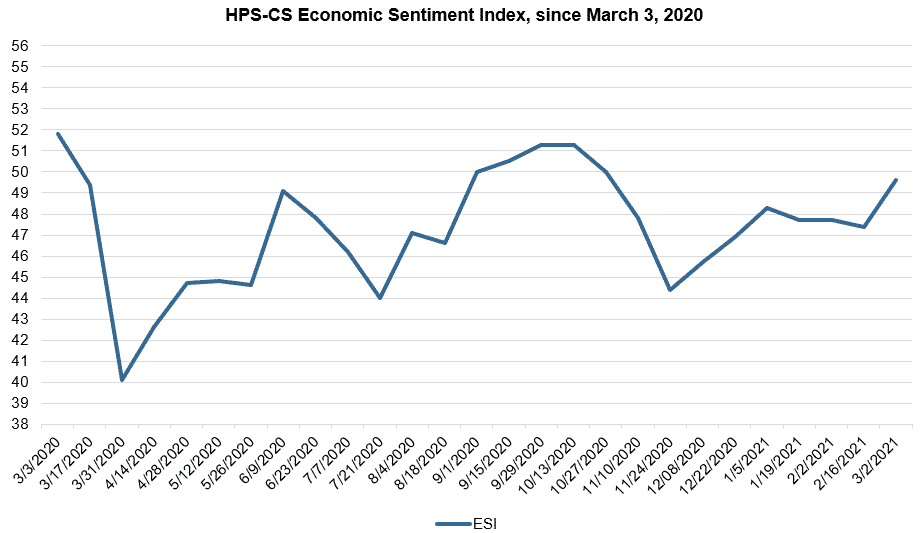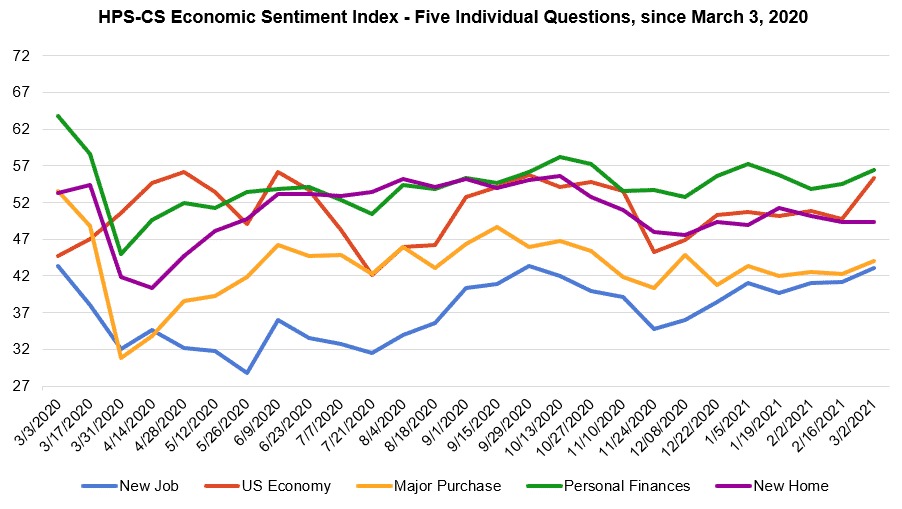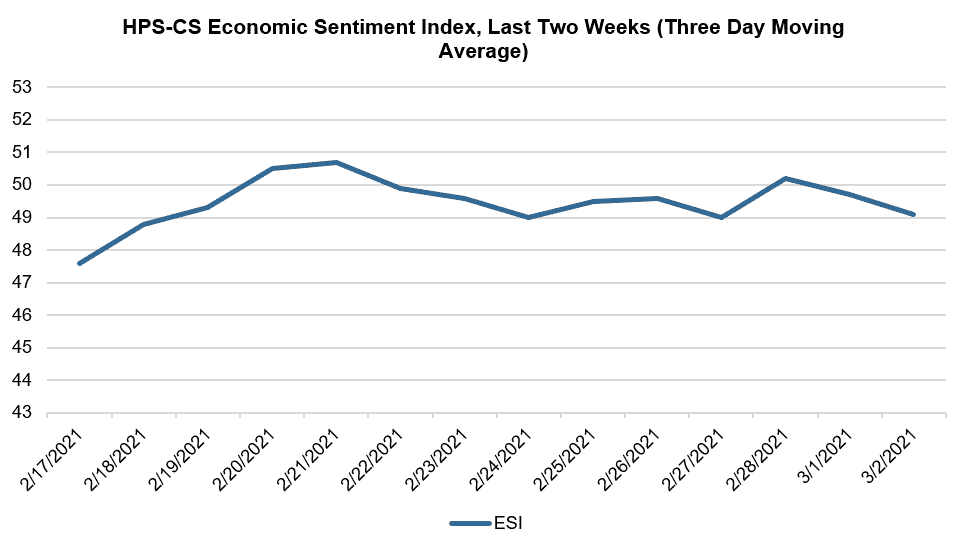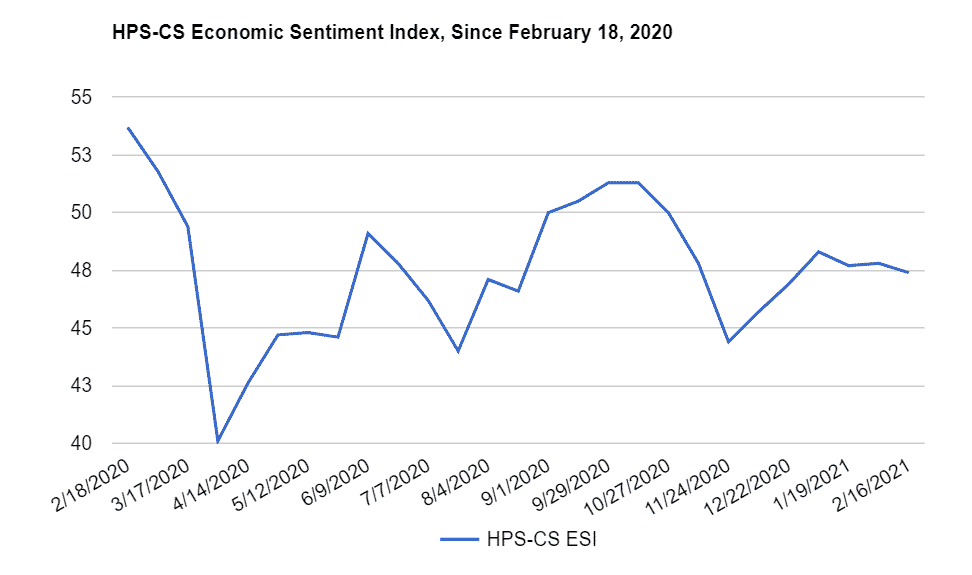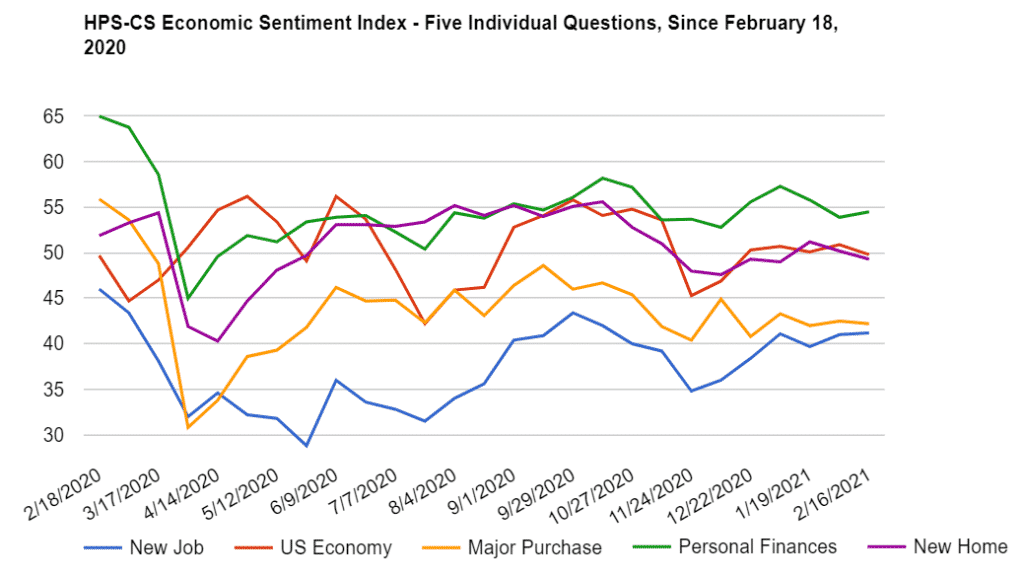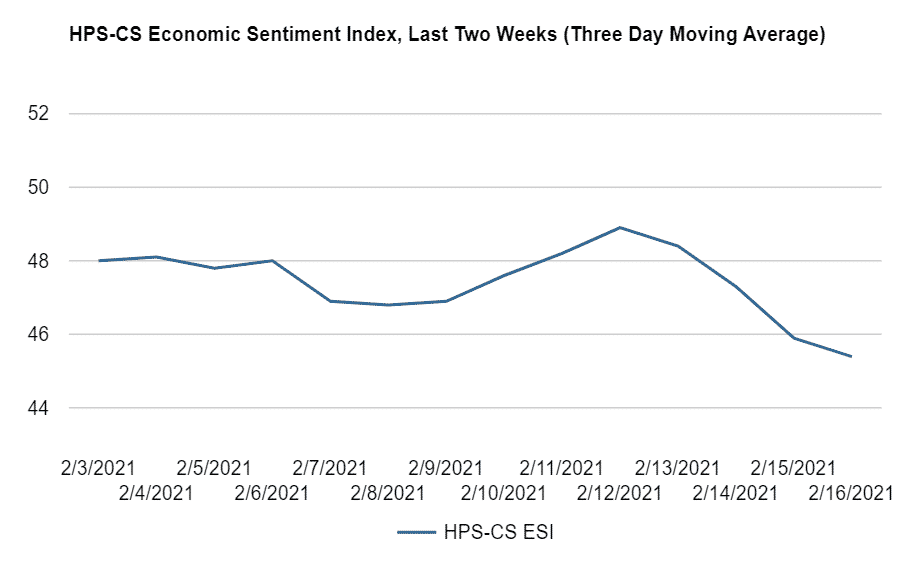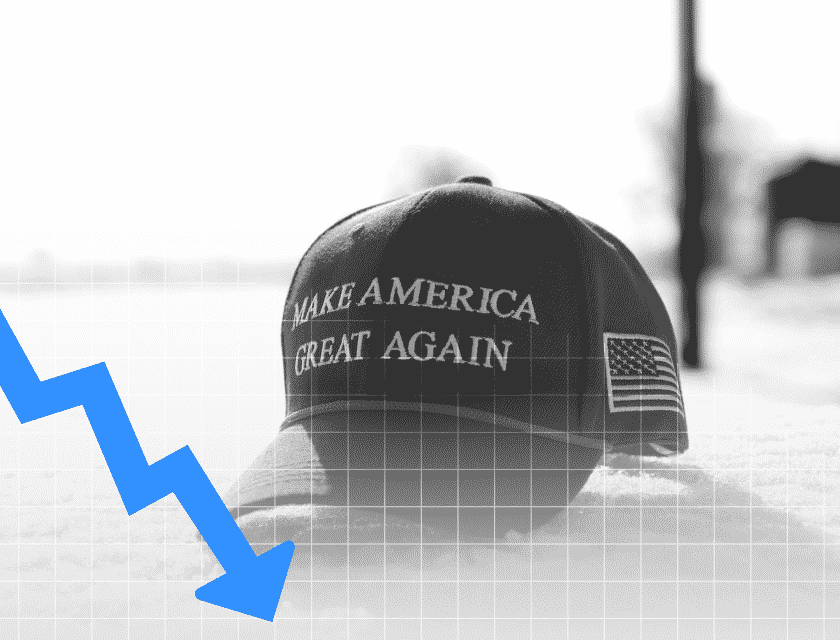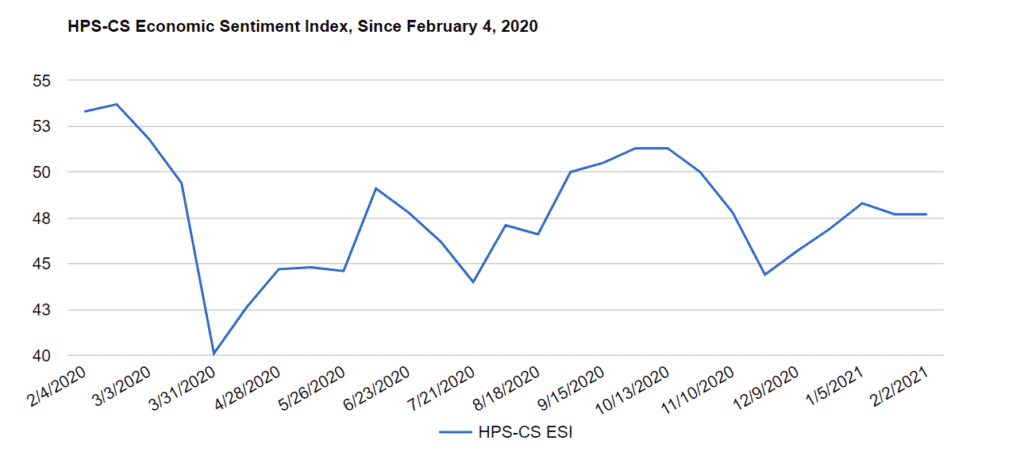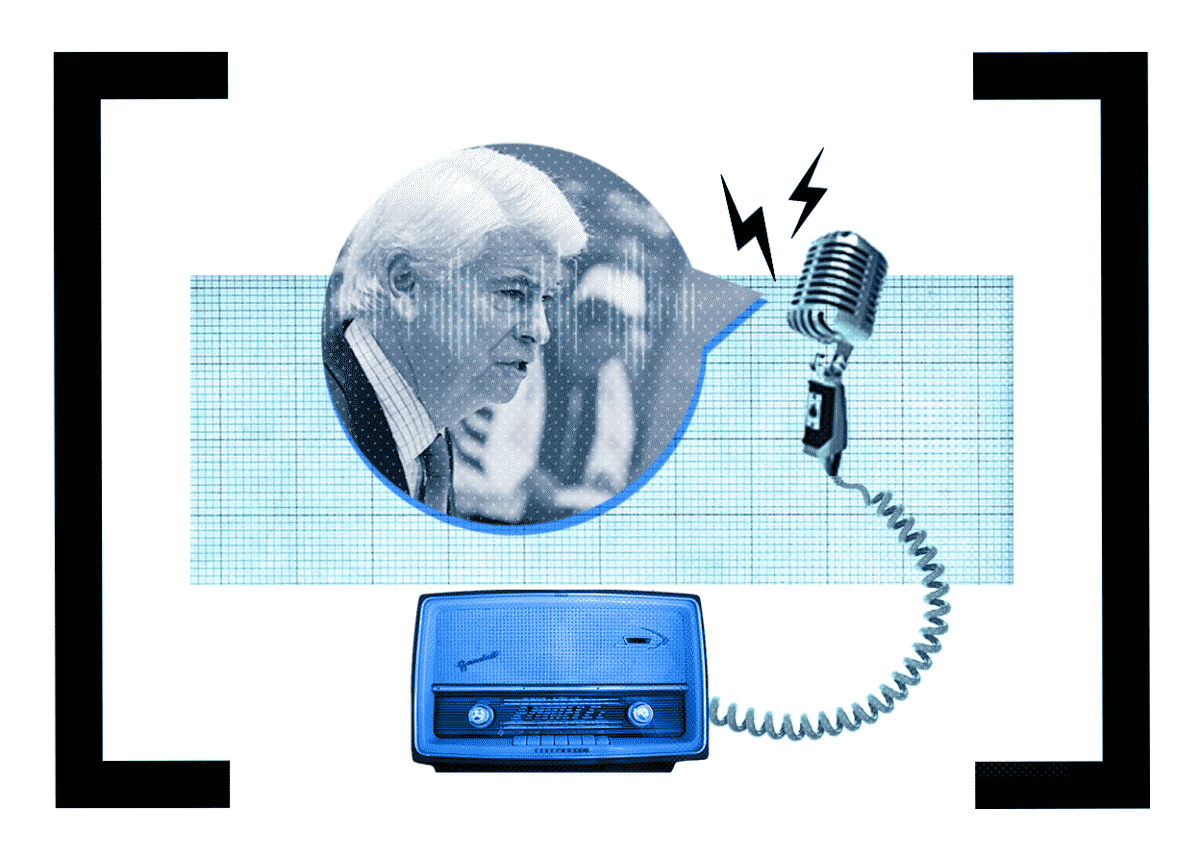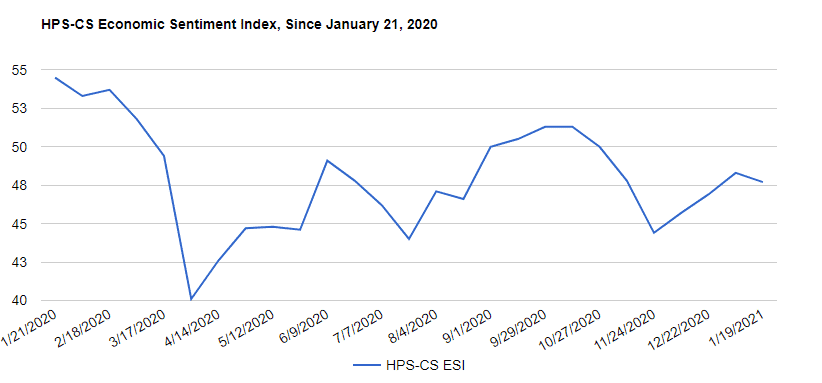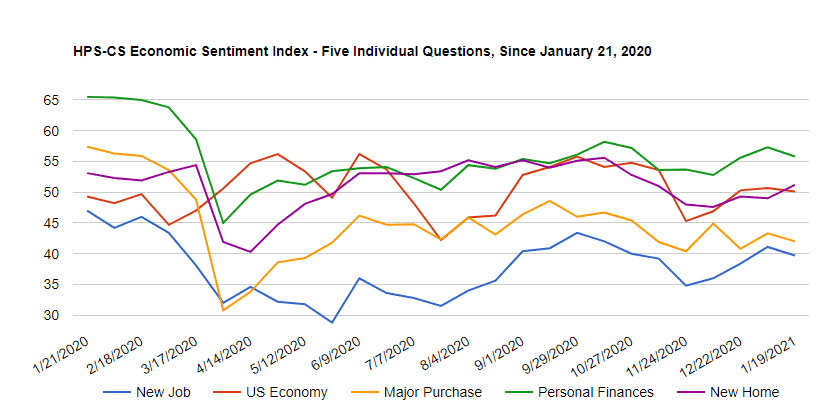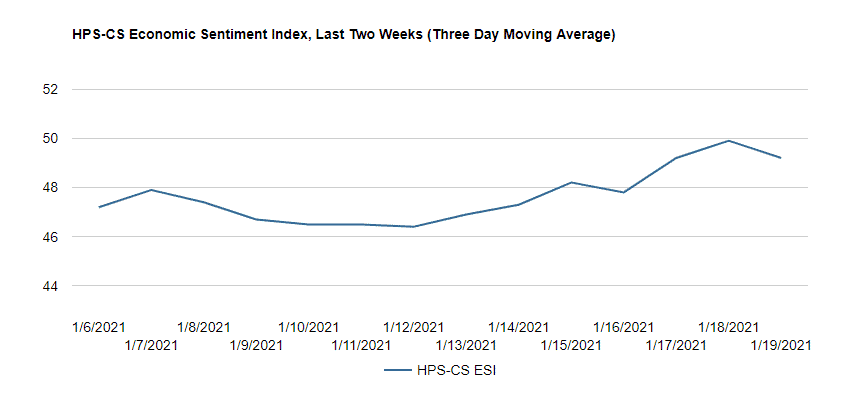Overall economic sentiment fell a full point to 49.3 over the past two weeks, according to the HPS-CivicScience Economic Sentiment Index (ESI). Confidence in the job market soared to its highest level since 2018, but it wasn’t enough to overcome a drop in confidence in the housing market, personal finances, and the overall U.S. economy.
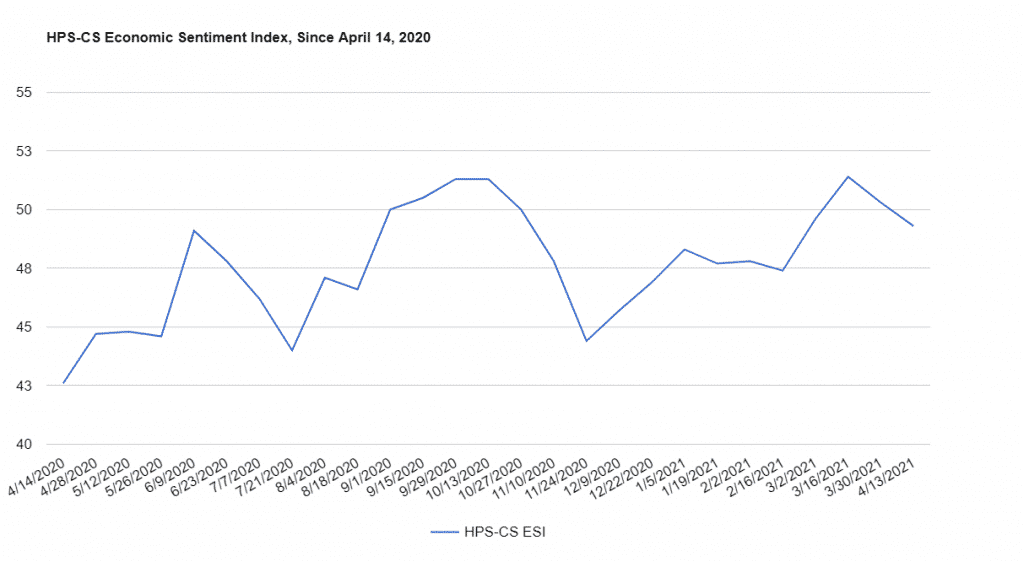
Despite the strong confidence in the job market (rising 3.2 points to 50.7), likely buoyed by the impressive March jobs report, three of the remaining four ESI indicators fell over the past two weeks:
– Confidence in the housing market tied for the sharpest drop in sentiment, declining 3.1 points to 43.9, its lowest value in a year.
– Consumer confidence in personal finances also fell 3.1 points, hitting a four-month low of 55.2.
– Overall sentiment towards the U.S. economy fell 2.7 points to 51.1.
– Yet, consumers’ confidence in making a major purchase reached a six-month high, inching up 0.4 points to 45.5.

The moving average began on March 31 at 50.1. It fluctuated over the two-week period, reaching its second-highest value of 50.8 on April 2, when the March jobs report was released, and its overall high of 51.3 on April 8. The moving average hit its low of 46.5 on April 11 before closing at 46.8 on April 13.
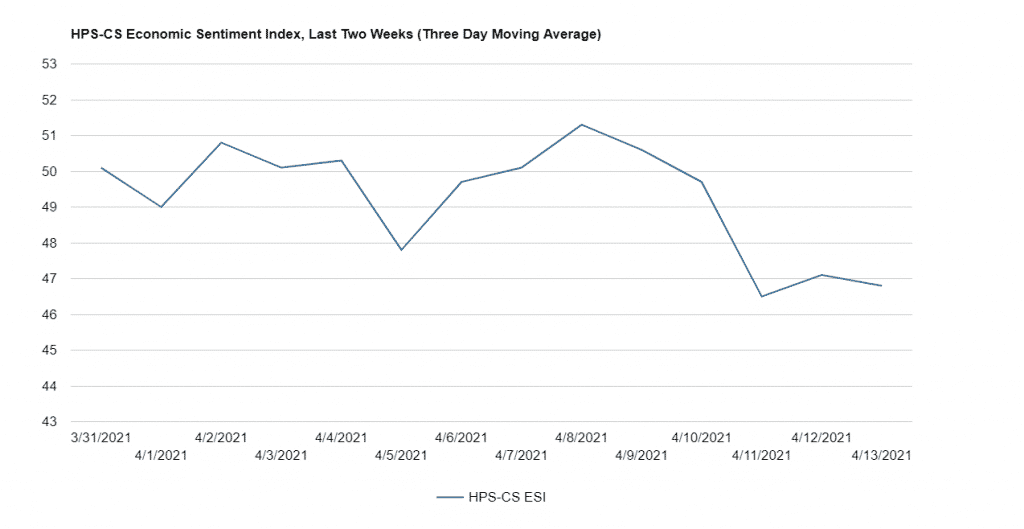
About the Index
The HPS-CivicScience Economic Sentiment Index (“ESI”) is a “living” index that measures U.S. adults’ expectations for the economy going forward, as well as their feelings about current conditions for major purchases. The primary goal of the Index is to accurately measure movements in overall national economic sentiment and to provide a more sophisticated alternative to existing economic sentiment indices. Unlike other prominent indices that release consumer sentiment estimates infrequently, the HPS-CivicScience Index is updated in real time as responses are collected continuously every hour, every day. Large-scale cross-tabulation of survey responses and consumer attributes enable more granular analyses than are currently possible through prevailing measures. For a more detailed overview of the Index and the underlying methodology, please request a white paper.
About CivicScience
CivicScience, Inc. provides the leading intelligent polling and real-time consumer insights platform, the InsightStore™. Its proprietary platform powers the world’s opinions and quickly gets that data to the decision makers who care. Every day, CivicScience polls ask millions of people questions related to thousands of topics, while its powerful data science and big data technology analyzes current consumer opinions, discovers trends as they start, and accurately predicts future behaviors and market outcomes. CivicScience polls run on hundreds of premier websites, in addition to its own public polling site at www.civicscience.com. CivicScience’s InsightStore™ is used by leading enterprises in marketing research, advertising, media, financial services, and political polling. For more information, visit CivicScience by clicking here and follow them on Twitter – @CivicScience.

